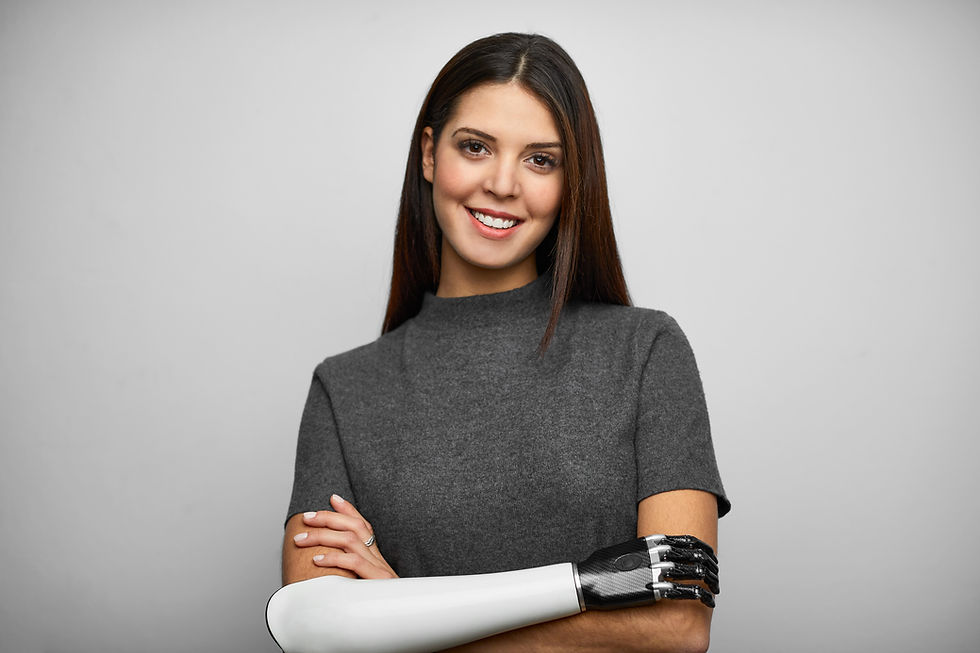
UPPER LIMB PROSTHETICS
Northern Prosthetics and Orthopedic Inc. specializes in providing upper limb prosthetic solutions for individuals with limb loss or limb differences. We offer a range of cutting-edge prosthetic devices and personalized services to help improve the quality of life and functionality for our clients. Our team of skilled professionals works closely with patients to assess their unique needs, design custom prosthetics, and provide ongoing support to ensure the best possible fit and function. Whether it's a myoelectric arm, body-powered prosthesis, or other advanced prosthetic technology, Northern Prosthetics and Orthopedic Inc. is dedicated to helping individuals regain independence and achieve their goals.
Partial Hand
Hand and finger amputations are the most common upper limb amputation, and there are many prosthetic solutions available. Many hand and partial hand amputations are due to trauma, and it is common to experience limited range of motion, misalignment of remaining fingers, hypersensitivity or insensitivity, scarring and lack of strength in the remaining portions of the hand. We will work closely with your medical and rehabilitation team as you progress through your rehabilitation to provide the care needed throughout your journey.

At-Shoulder
Although amputations at the shoulder (shoulder disarticulation) are rare, the most common causes are surgery to remove cancer or infection and trauma. This type of amputation is complex—it involves removing the entire arm and upper arm bone from the shoulder blade and collarbone—which is why it is important to think about your functional and mobility goals as early as you possibly can following surgery. This will help your care team determine the best possible treatment plan for you while helping set expectations about the journey ahead.

Below-Elbow (BE)
About 70 percent of the upper limb amputations in the United States occur below the elbow.1-3 These amputations are usually as a result of trauma, cancer, vascular disease, or infection. Some of the most common below-elbow procedures include transradial amputations (between the wrist and elbow), wrist disarticulations (through the wrist joint), and transcarpal amputations (through the hand–sometimes called partial hand amputations).

Initial process
Discuss options with your clinician, as there are many prosthetic options designed to meet varying functional needs. Depending on your desired goals, your prosthetist will recommend one of six upper limb prosthetic types: no prosthesis, passive, body-powered, myoelectric, hybrid, or activity-specific. No matter which one you choose, you will need the same types of components, including a socket, suspension, elbow, wrist, and terminal device (most often a hand or hook).

Above-Elbow (AE)
Limb loss above the elbow is usually due to trauma, disease, or infection. About 30 percent of the upper limb amputations in the United States occur above the elbow.1-3 Some of the most common above-elbow procedures include transhumeral amputations (between the elbow and shoulder) and elbow disarticulation amputations (occurring through the elbow joint).

Design Considerations
Because upper limb prostheses have several parts, everything must work together seamlessly. The process takes time, so be patient with yourself and reach out for support when you need it. Your prosthetist will be with you every step of the way, along with your doctors, therapists, family, and friends, but the support of peers who have experienced similar challenges is particularly integral to the healing process.

Would you like to receive a complimentary in-person or online consultation with our clinical team? Please contact us.










